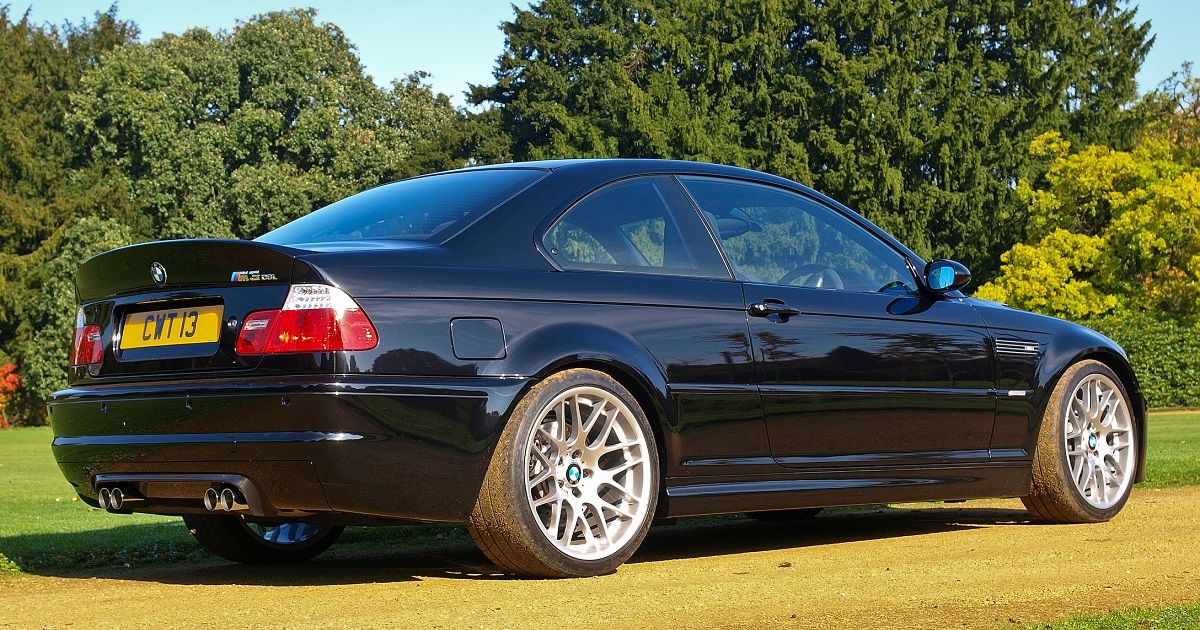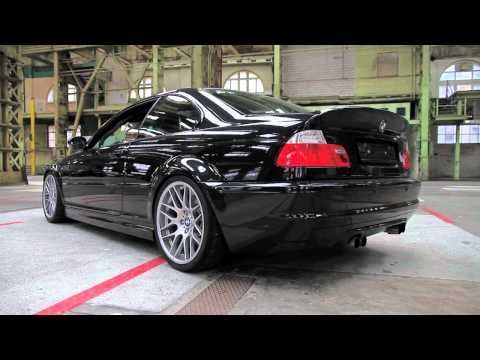Before the 2000 BMW M3 E46 went on sale at car dealerships during the 2000s, this car had a long history dating back to the 1980s. According to Top Speed, the first generation M3 was mainly a racing car tamed for road use. It was offered in the US from 1988 until 1991, and it was based on the E30 3 Series. It was a winged spoiler coupe powered by a BMW M4-cylinder engine of 2.3-liters and 192 HP.
But it was not until the mid-1990s that the second generation M3 became more established. It was based on the E36 3 Series, and it made its debut as a 1995 model, but its purpose beyond the usual BMW M dedication to great performance and handling was to bring BMW M and its fantastic beasts to a wider variety of buyers in the US.
When it came to the third-generation M3, launched at the beginning of the new century, this model was one of the most highly anticipated BMW models ever. It was designed on the basis of the E46-3 Series, and it represented a significant advance over its predecessors.
For the first time ever, it seemed possible that the German car manufacturer could join everyday practicality and utility with stunning performance and road manners. It was priced at $46,045, according to Top Speed.
Beyond this, there are many other great features of this 2000 model. Let's find out what they are.
What We Love About The 2000 BMW M3 E46's Performance And Handling
Named the S54, the E46 M3's engine shared the familiar layout of other BMW inline 6-cylinder engines. The M3 engine, like its predecessor, had a cast-iron block. This was because BMW engineers had to ensure that the 2000 model had compactness and strength. The engine developed 333 HP, and its internal stresses were incredible. To give credit where credit's due, BMW worked hard at the time to make this model better.
The Double VANOS that the engine was also equipped with varied valve timing on the intake and exhaust camshafts without the step of the 2-stage older system. It varied timing over a wide range and contributed in a significant way to the engine's power output. It is no wonder this car is now considered a classic.
Individual throttles were positioned much nearer the cylinders than ever before, and they brought atmospheric pressure right to the cylinders. All six throttles were operated from a single shaft, each in its own throttle body. This represents an improvement from previous models.
The engine's rev limit was 8,000 RPM, and its maximum power occurred just below 7,900 RPM. Amazing!
Many modifications were performed on the M3. There was a new thrust plate, and the new M3 struts separated the top mountings of the spring and shock absorber. As the strut's top anchor point moved rearward, this resulted in the caster increasing. The separating mountain improved isolation from harsh road conditions, which is always handy.
With upper lateral links of cast aluminum, the track also expanded relative to the previous M3, and both pairs of lateral links (lower and upper) had steel ball joints as opposed to rubber bushings at their outer ends. Altogether, this car's performance and handling represented a substantial improvement from the '80s and '90s M3 models.
What We Love About This Ride's Chassis And Design
Weight reduction was the goal that BMW engineers had in mind with this model, according to Which Car? It was also the first M car to feature a carbon-fiber roof, saving about 2 lbs, and it lowered the center gravity.
Approximately 110 lbs came out of the interior, with lightweight seats, center console, glass, and door panels. Several pounds were slashed off each tire, with aluminum lower control arms further reducing unsprung weight. The carbon fiber front bumper shell discreetly shifted rear weight distribution rearwards, but it was a pure racing part.
There was once a myth that the trunk floor was made of cardboard and cannot hold any weight. In fact, the underside of the boot was metal. It did have a lightweight cardboard trunk liner.
A massive aerodynamic gain came from the Michelin Pilot Sport Cup tires. Later Cup+ tires provided a bit more wet weather versatility.
Over time, M3 units experienced cracking where the subframe met the body. Many independents will remove the rear subframe and weld in reinforcing plates.
If anybody still owns an M3 today, it is important to listen for clicks from the rear end of the car when accelerating or braking. But despite this, this BMW model is still a great car to this day, and there are plenty of 2000 M3 E46s available to buy!



.jpg)